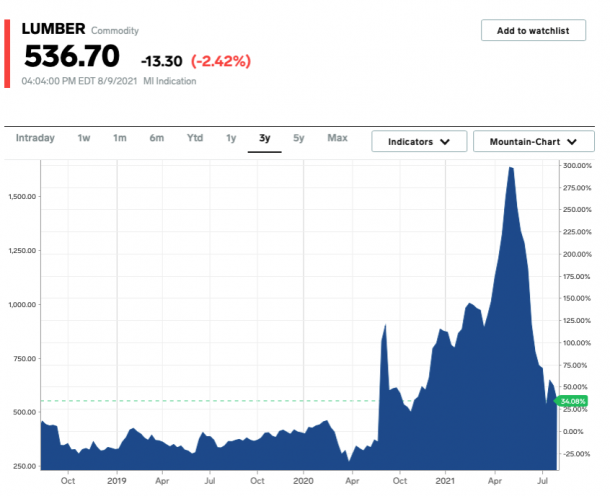B.Riley initiates Corsair Gaming stock coverage with Neutral rating
There’s just over two weeks to go before the Federal Reserve’s Jackson Hole Symposium and investors are buying U.S. dollars on the premise that the Fed will set the stage for tapering in September. The U.S. economy came roaring back this summer as vaccinations increased. Last week’s strong non-farm payrolls report sealed the deal for bets on monetary tightening. Consumer prices are due for release on Wednesday, and a good number would reinforce expectations for taper in the fall, driving the U.S. dollar higher. USD/JPY, which rose to its highest level in three weeks, could extend its gains towards 111, while EUR/USD, which dropped to its lowest level since April, could continue to slide towards 1.16.
With that said, traders need to beware of a possible U.S. CPI miss. Last month, consumer prices rose at their fastest pace in nearly 13 years. After such a rapid increase, a slowdown is likely. Lumber prices, which hit a record high of $1,515 in late May has fallen 69% (see chart below). Used car prices also fell 2.6% month over month in July, according to the Manheim Used Vehicle Index, which analyzes more than 5 million used vehicle transactions annually. CPI is still expected to increase as firms pass on higher costs to willing price takers, but on a year-over-year and even month-to-month basis, the pace of growth should slow ever so slightly.
The question then becomes: How much of a slowdown matters to the Fed and, in turn, the U.S. dollar?
The answer is very little. The central bank believes that price pressures are transitory, so slower growth will validate its view. Also, any slowdown will probably be immaterial, so for the most part, the U.S. dollar’s uptrend should remain intact.
EUR/USD sank to a four-month low on the back of the German ZEW survey. Although the current conditions index improved to 29.3 from 21.9, the expectations component fell for the third month in a row. The decline from 63.3 to 40.4 was much greater than expected. Investors are worried that the Delta variant could cause a fall slowdown in Germany.
The best performing currency was the Australian dollar, which shrugged off a sharp decrease in business confidence and more restrictions in Australia. The government expanded the COVID lockdown to rural areas outside of Sydney on concerns that the virus has spread beyond city limits.

